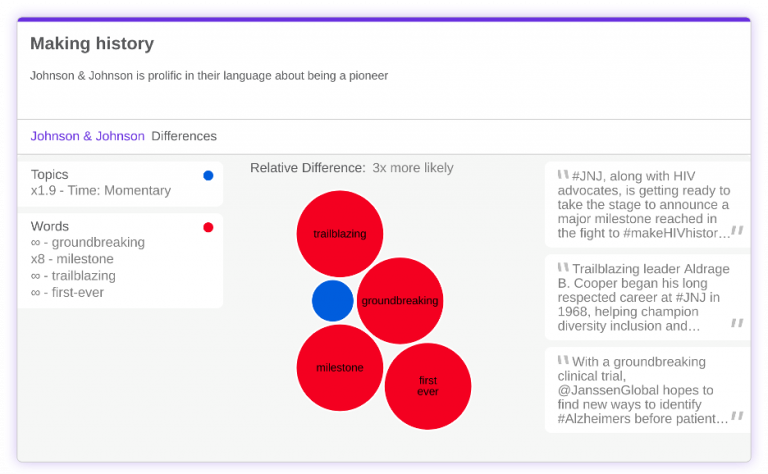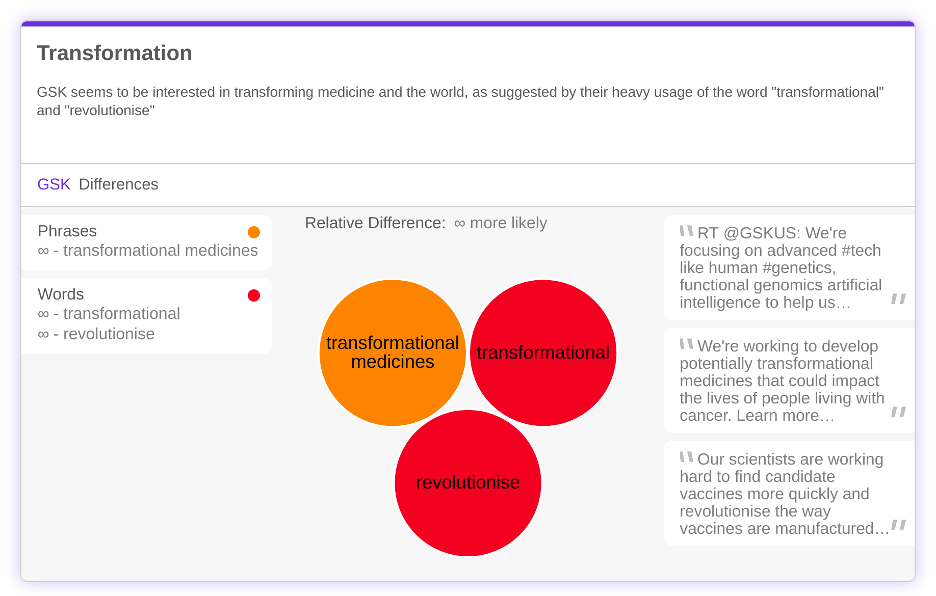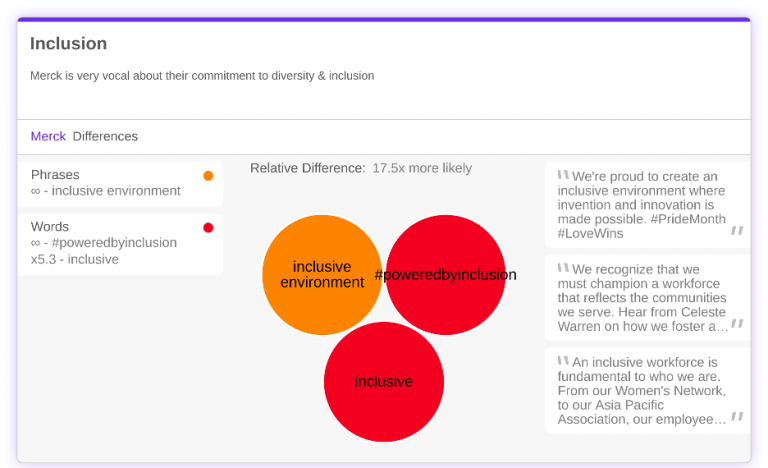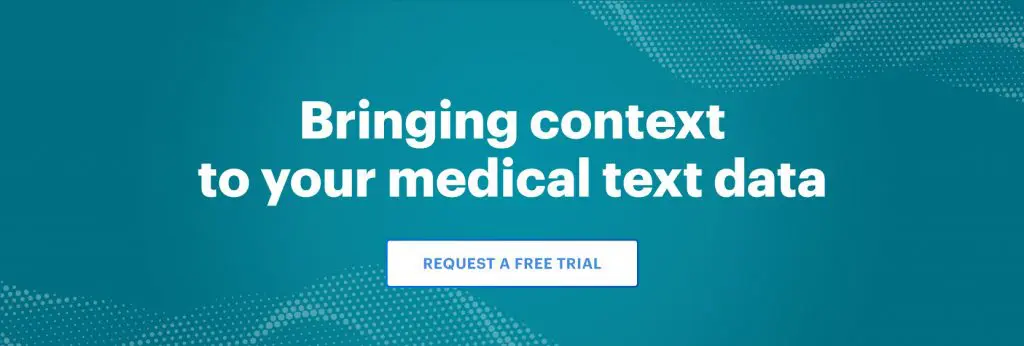Analysis using social listening data from pharma brands

These days, everyone is on high alert when it comes to their health. A rogue cough or headache could mean a positive COVID-19 diagnosis. This newfound concern for personal and public health spans the entire healthcare industry – including pharmaceutical companies. One key source of data for pharma brands is through social listening tools.
During this time of uncertainty, nearly 90% of Americans are concerned about rising drug prices. So to gain some insight into how five top pharma brands communicate with customers, we analyzed their tweets. This form of social media competitor analysis will uncover the differences in how brands communicate with consumers on social media.
Using our specialized text analysis tool, Relative Insight Medical, we found that Johnson & Johnson, Pfizer, GSK, Merck and Novartis all had similar themes and ideas, but used language unique to each brand to communicate their messaging. Here’s our research into pharma on Twitter.
Johnson & Johnson: The Supportive Pioneer
If you live in New York City, the nightly applause in celebration of healthcare workers is just a way of life. But long before COVID-19, Johnson & Johnson was already voicing support for hospital employees. Frequently using words like frontlines and the hashtag #nurseschangelives, Johnson & Johnson was 5.8x more likely to discuss healthcare workers and 9.3x more likely to discuss nurses than its competitors. Those workers were often described as brave.
At over 130-years-old, the oldest pharma brand of the bunch used its history to create a trailblazing image. Words like first-ever and groundbreaking were tweeted infinitely more by Johnson & Johnson than by the other brands.


Pfizer: The Caring Colleague
Another common theme across the set is a desire to appear caring – human even. Pfizer emphasized topics like emotional wellbeing and family, using those themes 6.3x and 1.8x more, respectively. Words and phrases relating to support–health tips, awareness and resources were also a feature of Pfizer messaging.
The two healthcare issues most discussed by the pharma brand, sourced through social listening, were rare diseases and smoking. Likely not a coincidence as Pfizer produces Chantix, a prescription medication used to help adults quit smoking.


GSK: The Revolutionizing Scientist
GSK utilized words and phrases unused by any of the other four brands. The company was infinitely more likely to use the word laboratory as well as transformational. This focus on product development can also be seen in frequent use of words relating to advancement like pipeline and development.
Like Pfizer, GSK also highlighted specific health concerns. It used the term Immune System 39.0x more than competitors.

Merck: The Emotive Inventor
Time and time again we found Merck relying on one word: Invent. The brand used derivations of the word invent 75.0x more than the other companies. Invention, invent, inventor, inventing – the list goes on. The forward-thinking pharma brand also favored the word future and the idea of continuing to do great work.
While Merck created a strong narrative surrounding invention, they also utilized less scientific language. We found the brand to be emotive, using the world hopeful 26.0x more than the rest of the set. This softer side is also seen in its commitment to diversity and inclusion in the workplace


Novartis: The Awareness Analyst
The overarching theme we saw in Novartis was awareness. The company regularly tweeted hashtags to spread awareness for various health concerns. Spanning from #worldmsday to #migraineawarenessweek, this push for awareness was not specific to any one group of diseases or conditions. We also found the pharma brand to use data-forward language, often tweeting about new research and statistical finds.
How pharma brands can use social listening data
As the healthcare and pharmacy industry changes with the growth of online subscription services, it’s crucial these companies create a distinctive tone of voice and brand persona to maintain their dominance and relevancy. Social media marketing in the pharmaceutical industry will only increase in importance.
Social media competitor analysis allows brands to uncover their unique strengths and weaknesses in how they present themselves online and to the public. Analyzing social media messaging uncovers common themes and tone of voice used by your brand, helping to hone social strategy and create consistent messaging that stands out.

